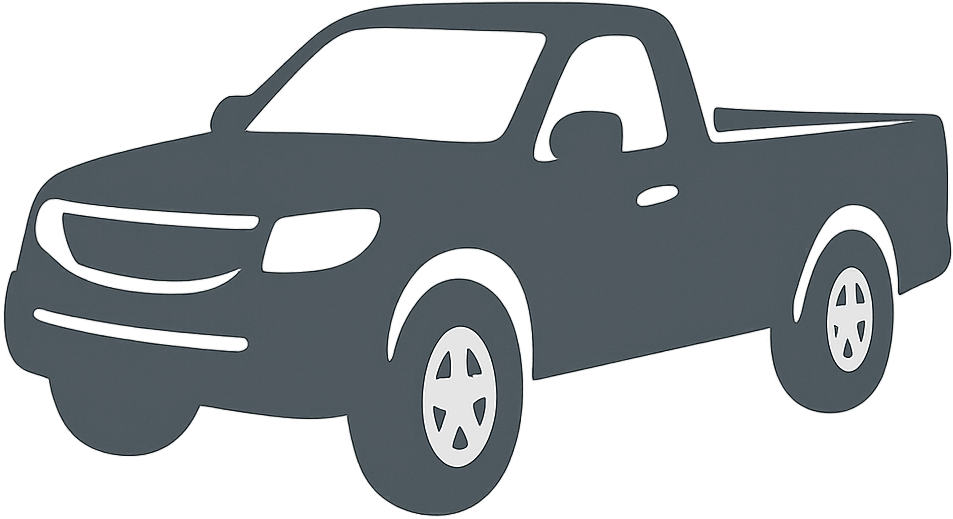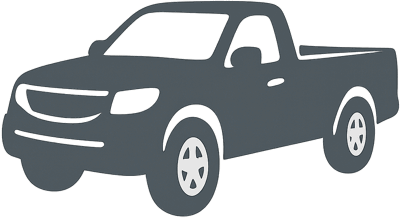 2008 Isuzu D-Max I Dimensions, Size & Specs
2008 Isuzu D-Max I Dimensions, Size & Specs
Measurements of the 2008 Isuzu D-Max I, engineered for optimal performance and comfort
| Dimensions | |
|---|---|
| Length: | 5030-5155 mm198.0-203.0 in16.5-16.9 ft |
| Width: | 1720-1800 mm67.7-70.9 in5.6-5.9 ft |
| Height: | 1635-1735 mm64.4-68.3 in5.4-5.7 ft |
| Weight Specifications | |
| Curb Weight: | 1470 kg3241 lbs |
| Maximal permitted Weight: | 2650 kg5842 lbs |
| Tire Specifications | |
| Tire Size: |
|
The Isuzu D-Max I, produced between 2008 and 2012, is a versatile mid-size pickup truck renowned for its reliability and practical dimensions. With a length ranging from 5030 to 5155 mm (198.0 to 202.9 inches), it offers a spacious but manageable footprint ideal for both urban and off-road use. The vehicle's width varies between 1720 and 1800 mm (67.7 to 70.9 inches), providing a stable stance while maintaining ease of maneuverability in tight spaces. The height stands between 1635 and 1735 mm (64.4 to 68.3 inches), balancing ground clearance and cabin comfort. This generation of the D-Max typically weighs around 1470 kg (3241 lbs) when empty, supporting a maximum loaded weight of 2650 kg (5842 lbs), making it capable of handling substantial cargo and towing tasks. Equipped commonly with 225/75 R15 tires, the truck maintains good traction and ride quality across varying terrains. Overall, the 2008-2012 Isuzu D-Max I combines robust construction with practical dimensions, making it a competitive choice in the pickup truck segment for users seeking durability and utility.
Discover the standout features that make the 2008 Isuzu D-Max I a leader in its class
Have a question? Please check our knowledgebase first.
The Isuzu D-Max I, produced between 2008 and 2012, has a length that varies by model and configuration, typically ranging from 5030 mm to 5155 mm (approximately 198 inches to 203 inches). This range accounts for different cab styles or bed lengths. The relatively long body offers ample space for cargo and enhances its utility as a pickup truck suitable for both work and personal use.
The width of the Isuzu D-Max I ranges from 1720 mm to 1800 mm (about 67.7 inches to 70.9 inches). This moderate width provides a good balance between interior cabin space and external maneuverability. A wider stance typically helps in vehicle stability, especially when carrying heavy loads or navigating rough terrain, which is important for a pickup truck designed for work and off-road use.
The height of the Isuzu D-Max I falls between 1635 mm and 1735 mm (approximately 64.4 inches to 68.3 inches). This height gives the truck a commanding road presence and allows for good ground clearance, important for off-road capability, while maintaining enough interior headroom for driver and passengers.
The curb weight of the Isuzu D-Max I is approximately 1470 kg (3240 lbs), which refers to the vehicle weight including standard equipment and fluids but without passengers or cargo. The maximum weight capacity — the Gross Vehicle Weight Rating (GVWR) — is about 2650 kg (5840 lbs). This means the truck can safely carry a payload (passengers plus cargo) up to around 1180 kg (2600 lbs), making it a capable pickup for a variety of heavy-duty tasks.
The standard tire size for the Isuzu D-Max I is 225/75 R15. This means the tires are 225 mm wide, have an aspect ratio of 75% (sidewall height relative to the width), and fit on 15-inch diameter rims. These tires offer a good balance of comfort, off-road capability, and load-carrying capacity ideal for a pickup truck designed to handle diverse driving conditions.
Yes, the Isuzu D-Max I typically fits into a standard single-car garage, but it depends on the garage dimensions. Standard garages usually measure about 2400-2700 mm in width and 4800-6000 mm in length (7.9 to 8.9 feet wide by 15.7 to 19.7 feet long). Since the D-Max I measures 5030 to 5155 mm in length (198 to 203 inches) and 1720 to 1800 mm in width (68 to 71 inches), it generally fits comfortably within these dimensions with some space clearance. Height of up to 1735 mm (68.3 inches) also poses no issue for standard garages with typical clearances.
The Isuzu D-Max I (2008-2012) succeeded earlier models such as the Isuzu Rodeo and older D-Max variants which were generally smaller and less refined in terms of dimensions. The D-Max I brought a slightly longer and wider body for improved cabin space and cargo capacity. For instance, earlier models often measured less than 5000 mm in length, while the D-Max I ranges from 5030 to 5155 mm, providing more room. The width also increased moderately to increase stability and comfort. This generation showed a balanced evolution with improved size to enhance utility while still maintaining off-road capability.
Compared to other midsize pickups from the 2008-2012 era, such as the Toyota Hilux, Ford Ranger, and Mitsubishi Triton, the Isuzu D-Max I is fairly competitive in size. Its length of about 5030-5155 mm is generally close to the typical midsize pickup range, making it neither the longest nor the shortest in its class. The width and height are also within common ranges for this segment. This sizing ensures the D-Max delivers comparable interior space and cargo volume while offering the ruggedness and utility that buyers expect from this category of pickup trucks.
Given the exterior dimensions of the Isuzu D-Max I — particularly its width of 1720 to 1800 mm and length of 5030 to 5155 mm — the cabin space is reasonably spacious for a midsize pickup. The wider body allows for comfortable seating for up to five occupants, depending on cab configuration. Headroom and legroom are typical for this segment, with sufficient space for adult passengers in both front and rear seats. The increased dimensions over previous generations result in a more comfortable interior, making it practical for both work and longer journeys.
The Isuzu D-Max I, produced from 2008 to 2012, is a robust midsize pickup truck praised for its durability and off-road performance. It typically features reliable diesel engines, strong payload and towing capacities, and a solid frame suitable for heavy-duty use. Its dimensions balance utility and maneuverability, while the suspension is engineered for mixed road and rough terrain conditions. The truck is suitable for commercial operations, outdoor activities, and daily driving, making it a versatile choice in the midsize pickup segment.
Discover similar sized cars.

| Production: | 2017-present |
|---|---|
| Model Year: | 2017 |
| Length: | 5080 mm200.0 in |
| Width: | 1720-1820 mm67.7-71.7 in |
| Height: | 1680-1715 mm66.1-67.5 in |
